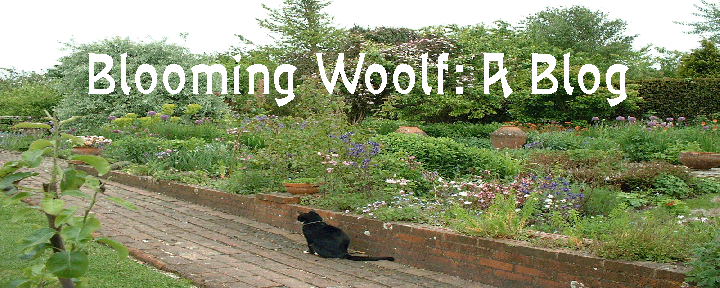
Dear member of the Woolf-pack—
You’ve signed up for the senior capstone seminar on Virginia Woolf in the Fall. I am writing you to tell you a little bit about the class, so you can –if you want; this isn’t a requirement—get a bit of a head start over the summer.
Attached you’ll find a tentative syllabus. I am pretty sure about all the books we are reading. I’m also attaching a list of preferred editions for the class. I know a lot of you may already have copies of some of Woolf’s work and it’s okay to use those, but I’d really rather, whenever
 possible, you use the new annotated editions from Harcourt Brace. (The entire series is edited by Mark Hussey.) Not only are these definitive texts, they also contain excellent, very up-to-date Introductions, and annotations of all the historical, literary, political, artistic allusions you might otherwise miss. They are cheap, costing about $10-12 each, and the more of you have these texts, the easier it will be to be “on the same page” in class.
possible, you use the new annotated editions from Harcourt Brace. (The entire series is edited by Mark Hussey.) Not only are these definitive texts, they also contain excellent, very up-to-date Introductions, and annotations of all the historical, literary, political, artistic allusions you might otherwise miss. They are cheap, costing about $10-12 each, and the more of you have these texts, the easier it will be to be “on the same page” in class.



We are reading a total of eight books by Woolf, six novels and two book-length essays, all of which are available in this annotated format. In addition we will be reading a selection of other essays and short stories. The majority of these are conveniently collected in The Virginia Woolf Reader, ed. by Leaska, which you really do need to buy. (On the syllabus, the stuff highlighted in yellow is what is not in Leaska, which I need to remember to find on-line or post on BB)
If you would like a really good, genial Introduction to Virginia Woolf, I’d really recommend The Cambridge Introduction to Virginia Woolf by Jane Goldman. It’s very recent, and she is very smart. The book covers the life, work, contexts, and critical reception. Her lists of recommended articles for further reading are impeccable, and the last section offers a really useful history of trends in Woolf criticism. (The book is $25 on Amazon, but I see lots of remaindered copies available for $3+ shipping.) 

If you want to go the whole hog/ total immersion route, I’ suggest Hermione Lee’s magisterial,  definitive biography. It’s very long and probably more than you’d ever want to know, but it’s awfully good. I am re-reading it right now and am amazed at how she manages to weave in every single important passage from the diaries and letters etc. It has lovely chapters on Woolf’s relationships with other important Modernists such as Katherine Mansfield and T.S. Eliot.
definitive biography. It’s very long and probably more than you’d ever want to know, but it’s awfully good. I am re-reading it right now and am amazed at how she manages to weave in every single important passage from the diaries and letters etc. It has lovely chapters on Woolf’s relationships with other important Modernists such as Katherine Mansfield and T.S. Eliot.
I haven’t yet decided exactly what the course assignments will be. I know you’ll have a final seminar paper (8-12 pp), a shortened version of which you’ll deliver at a class mini-conference during our regular final exam slot. I also think I’ll ask you to do a page per class day in a blog, so that I can see you are doing the reading, and so you have a chance to write about what interests you. I’d also like to assign a visual journal/altered book, a more visually creative kind of reading journal that’s been very successful in the past. I’m still trying to decide how to introduce some requirement for you to occasionally read a critical essay or two. And I’d like to be giving you some sustained feedback on your writing. However, I want the main focus of the seminar to be READING and discussing Woolf, so I am trying to find ways to make sure there aren’t too many assignments.
I’m really looking forward to teaching this class. It’s the first time I’ve been able to teach a whole course on Virginia Woolf. I’m currently working on a book about parks, gardens, and flowers in Woolf’s life and work and will probably be blogging along with you on my own Woolf track.

No comments:
Post a Comment